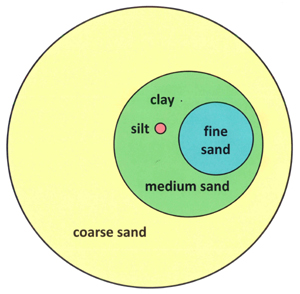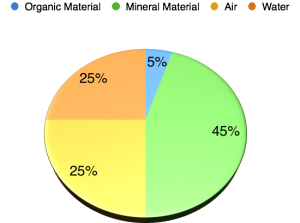Bowling has followed the example of golf in turning towards adding more and more sand to the rootzone (top-soil) of greens in the search for firmer, truer and smoother surfaces. In golf, this is largely influenced by the USGA specification for putting green construction, a much mis-understood set of principles that actually work in my experience. However, the USGA specification. although flexible enough to be adapted to many situations around the world, consists of a very precise set of guiding principles on green construction and in particular on the mechanics of soil. Sand and bowling green performance are of course linked, but the link is much more subtle and precise than many are prepared to investigate.
Golf, like bowling is subject to people making snap judgements about “new” ideas and in a lot of cases the USGA specification is shot down in flames as “suitable for America only”, only to be adapted by many golf clubs (and some new build bowling greens) with disastrous effects. These adaptations on the face of it are to make the specification more suitable for the local conditions, but in most cases are made without a basic understanding of how the specification works. This inevitably leads to “see, I told you so, these greens aren’t suitable for UK conditions”.
The Ideal Soil
You will remember from Performance Bowling Greens and from many articles on here that there is a formula for the ideal soil, certainly in terms of bowling green performance. The formula looks like the diagram below:
And it is this formula that the USGA rootzone specification aims to copy. However, the specification isn’t just about the rootzone. There are many other elements to it that make it work so well for golf course greens if constructed correctly. But, let’s look at the soil/rootzone element for a minute longer and in particular at the 45% that makes up the Mineral element of the soil.
Mineral Element of Soil
That 45% is made up of 3 main components and these are Sand, Silt and Clay. Sand is further split into around 5 grades ranging from Very Coarse Sand to Very Fine Sand. These different sized soil particles are called the Soil Fractions and their relative sizes are detailed in the chart below:

PSD and Drainage
The part of the soil that is made up of Very Fine Sand, Silt and Clay is referred to as “the fines”. The mixture of the various particle sizes by weight is called the Particle Size Distribution of the soil or PSD and is usually represented visually as a bar chart. The one below represents a typical USGA rootzone mix:
The immediately obvious thing about this graph is that there is a lot of Medium (0.25-0.50mm) Sand in it. This represents a highly uniform PSD, which is what is needed for good drainage in soil. However, as this spread of particle sizes is measured by weight even the tiny amount of clay in this sample represents a massive number of tiny clay particles and these are important along with the other fines for providing the soil’s water holding capacity, vital to the health and survival of our turf.
Nutrition
The clay particles along with Humus, are also critically important for ensuring that there is enough nutrition in the soil for our grass plants. Together they contribute to the Cation Exchange Capacity of the soil.
The Active Organic Matter is also important for the provision of turf nutrition as it is constantly recycled into plant available Nitrogen by soil organisms. A teaspoonful of healthy soil will contain around 1 Billion soil microbes!.
Messing with the Spec.
The USGA Specification, although a well thought out and easily replicable set of rules for creating high performance greens, merely aims to make it easy to reproduce the inherent performance and mechanical characteristics of the natural seaside soils that have provided perfectly smooth, fast and true surfaces for golf and bowls for centuries.
Although the USGA specification includes guidance on creating and maintaining the perfect rootzone, due to it’s apparent (mis-understood) complexity, lots of people take what they know about it (it seems to be very sandy) and apply that to their green situation. This has resulted in the demise of many golf and bowling greens in the UK, as more and more sand is applied to try to copy the USGA spec.
The USGA Spec and the Natural Seaside Links type soils it reproduces are not all about sand. They provide the ideal growing conditions for the fine grasses that produce the best bowling surfaces possible. They do this by providing the ideal balance of soil moisture, nutrition (reliant on fines and organic matter) and drainage, and not simply by being very sandy.
That doesn’t mean that it isn’t possible to apply the knowledge of how soil works to the improvement of existing bowling greens, but you must start with more than the thought that more sand makes better greens…in isolation, it definitely doesn’t!



